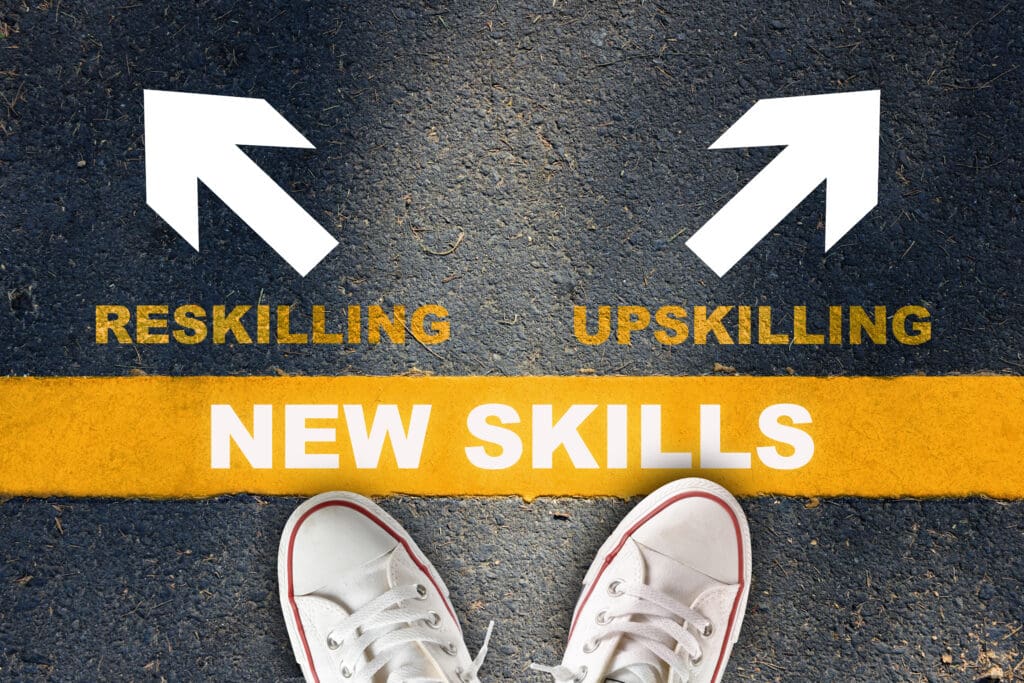 Limited access to key skills and newer technologies are driving HR’s investment in learning.
Limited access to key skills and newer technologies are driving HR’s investment in learning.
By Debbie Bolla
As organizations continue to struggle to find and attract talent, the learning landscape is starting to show its value once again. According to the PwC’s 17th annual global CEO survey, Fit for the Future, 63 percent of CEOs are concerned about the availability of key skills. Organizations are realizing the only way to obtain such skills is to develop them internally. Today’s learning approaches can offer a variety of avenues to enhance employee knowledge, skills, and engagement, and organizations are beginning to invest in them again.
The learning business process outsourcing (LBPO) industry has experienced a recent upswing, according NelsonHall’s fifth LBPO market analysis, which reports 2013’s market value was expected to reach $3.5 billion -the largest growth since 2007. It also found that the industry is forecasted for continued growth, reaching $4.5 billion by 2017. Talent development was cited as a top driver, with organizations leveraging training to improve workforce capability and performance.
“Learning is the great equalizer and with the global talent crisis imminent, it has never been hotter,” says Kieran King, vice president of global loyalty strategy for SkillSoft. “To compete, organizations can’t allocate to the few. Modern learning is moving the masses and democratizing access. It must be on tap to fuel competitiveness and agility.”
It also goes without saying that the Great Recession halted learning’s growth for a few years, and that uncertain economic times triggered workforce reductions as well as the urgency to do more with less -fewer employees, less budget, and less training.
“These workforce actions saw a reduction in leadership positions and individuals who could mentor the next generation of managers and leaders. This is further exacerbated by the fact that some workforces have up to 50 percent retirement eligibility,” says Scott Margason, COO of The Training Associates. “Now that companies are hiring and promoting again, they are finding they have gaps in the skills necessary to effectively onboard and develop management and leadership skills. Companies are turning to firms that specialize in management and leadership development to assist with skills development and coaching. From an on-boarding perspective, companies leverage part- time or contract instructional staff.”
Joe Cabral, chief human resources officer at Cleveland Clinic, says leadership development was key when he was senior vice president and CHRO for North Shore- LIJ Health System. “It’s leaders who are responsible for developing the workforce, and we need those leaders to take responsibility to help foster the talent.”
Employee engagement is another factor. Disengaged employees make up more than the majority of the workforce, with Gallup finding that 70 percent of employees feel disengaged with their work. Building workforce initiatives around engagement will encourage both productivity and retention rates. Approaching training with this in mind can help develop and instill skills while connecting employees to the organization.
“We are seeing more organizations shifting rapidly from the idea of training programs to training engagements -meaning, more and more workforces are signaling a desire to be engaged in their work, in their environment, and in their learning,” explains Dave Letts, vice president and general manager of Raytheon Professional Services. “It is clear that human beings show greater absorption and more rapid proficiency as their level of engagement increases. Thus, organizations are re-thinking their programs to architect them in such a way that it increases the level of learner engagement. Whether this be varied delivery methods, alternative designs or intriguing assessments, we are seeing a shift to training engagements.”
Engaged learning can also have a bigger impact in the long run. “Adults don’t learn by being told, they learn by doing,” notes Ed Trolley, vice president of managed training Services for NIIT. “The most effective training puts people in situations they will face in real life. They will attain the skills better by experiencing whatever they are trying to learn about in a simulated environment.”
Simulated environments have evolved throughout recent years with the influtration of improved technology via mobile applications, social media channels and gamification strategies. Gamification is an approach that really plays up the engagement factor as an interactive and fun way to build compentence. Cornerstone OnDemand learning and development manager’s Jeff Miller says that tracking points and making learning a competition can be motivating.
“Gamification may be the best strategy to get people to engage in learning and track learning,” he says. “By building situational interest in topics people may not (normally) find interesting, you may trigger something inside them to continue with being engaged.”
Raytheon’s Letts says that social and mobile learning approaches can address the informal learning needs of the workforce. “With these activities, learner retention rates are experiencing double-digit increases through the follow-up deployment of small learning bytes and assessments focused on the key objectives from the original learning events,” he says. “This also motivates the learner to continue to practice the critical skills delivered in the original training.”
HP ExpertOne is one of HP’s learning platforms and it allows employees to access training modules based on specific products and solutions. It creates a customized experience: Employees design their own learning path based on their job role, area of interest, and expertise level.
Rebekah Harvey, senior director of global learning for HP, says the organization has a successful social media strategy around HP ExpertOne -one which encourages engagement and participation. “We have a very active, engaged community,” she notes. “As a learning tool, it is very cutting edge.”
Twitter, Facebook, and has one of the largest, fast- growing LinkedIn communities, with more than 12,000 members (at press time). “It’s a big challenge to use it effectively. But we have found that social media collaborating and idea sharing has worked very well on the sales side. Members will post things they’ve learned -what’s worked and what has not worked.”
HP ExpertOne’s social channels also feature blogs, forum sites, and a knowledge base to draw people in and keep the conversation going. “We have a lot of members who are very active and really enjoy it,” Harvey says.
Mobile learning is another strategy that HP has been working on over the last few years. Harvey says that the organization launched a sales platform that aligns the curriculum on mobile devices, but during the development process, HP had to ensure all the content was mobile ready -and mobile appropriate. “We had to make sure the content can be consumed in bite- sized pieces,” she says.
Certainly the ease of mobile devices and the amount owned by the workforce are contributing to its growth in the learning space. According to Morgan Stanley’s Internet Trends: Report, Americans spend 220 minutes a day on social media channels today versus 120 in 2006. Plus mobile users have grown by 500 percent over three years.
“Access to content on mobile devices such as tablets and smart phones makes it much easier to provide content at the point of need,” says The Training Associates’ Margason. “The implication is that it is unnecessary to try to cover all elements of topics in class.”
What’s next for learning applications?
Wearable mobile learning devices. Raytheon’s Letts says that these hands-free devices are beginning to get attention since they deliver information easily while workers are on the job. “With built-in cameras, line- of-sight capability, positional head tracking and hi-res screens, live remote support through these devices increase the effectiveness of the support session, while providing the platform for more engaging, learner-specific on-demand mobile learning nuggets and interactions,” he says. “The addition of gestural gloves add to the experience, and through the use of higher-level 3D programming tools, single and multi- user games and simulations in virtual worlds are more immersive, more efficiently built, and potentially far more effective when experienced using wearable headsets such as the HD Oculus Rift.”
Video. Another on-demand application that allows employees to train on their terms and on their own time is video. Developing in-house video has become easier over the years through the various desktop products on the market, says Margason. “Many millennial generation members in the learning and development organization grew up creating videos on their laptops and they are bringing those skills into the workforce,” he says.
On The Horizon
Historically, training and development departments have had difficulty measuring return-on-investment metrics. But, as the industry has evolved and matured, organizations have developed strategies to make it easier.
“Business functions and the training organization are doing a better job of aligning business goals and training outcomes,” says Margason. “More and more frequently the HR business partner role is now expanded to include learning and development.
The result is that the business is able to get their requirements to the training organization sooner and the training organization, in turn, is able to more quickly develop and release training aligned with the business goals and objectives.”
NIIT’s Trolley agrees. “If you don’t do business alignment right, nothing else matters,” he says. “Learning organizations run at the speed of business and need to be fully embedded [in] the business for success.”
Big data is another catalyst for creating transparency around learning’s value. “For the learning space, the increased availability of analytics enables us to gain an impressive amount of insight into a workforce’s actual performance, not just learning data,” says Letts.
He also notes that data can help drive strategy around training. “We are now able to tell the story of our learning strategy based on data. For example, we can better identify root-causes for low performance, then define the learning strategy, its design and development as well as execution priorities.”














